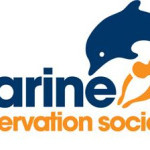- 産業: Earth science
- Number of terms: 10770
- Number of blossaries: 1
- Company Profile:
The UK charity dedicated to the protection of the marine environment and its wildlife.
Any of several currents driven by the northeast trade winds blowing over the tropical oceans of the Northern Hemisphere. In the Atlantic ocean, it flows west between the equatorial countercurrent and 30 degrees. Part passes along the northeast side of the West Indies as the Antilles current while part joins the Guiana current and enters the Caribbean Sea and the Gulf of Mexico as the Caribbean current . In the Pacific Ocean, it crosses from east to west between the approximate latitudes of 10 degrees and 20 degrees. East of the Philippines it divides, part turning south to join the equatorial countercurrent, and part going north to form the Kuroshio . In the Indian Ocean, in northern winter when the northeast monsoon duplicates the trade winds of the other oceans, the north equatorial current flows west and turns to the southwest along the coast of Somaliland as the Somali current . In Northern Hemisphere summer, when the southwest monsoon forms a continuation of the southeast trade winds, the north equatorial current and the equatorial countercurrent are replaced by an eastward flowing monsoon current .
Industry:Earth science
Any of several ocean currents driven by the southeast trade winds flowing over the tropical oceans of the Southern Hemisphere.
In the Atlantic Ocean it flows westward between the equator and 20 degrees. Part crosses the equator and flows northwest along the coast of South America as the Guiana current . The rest turns to the left and flows south along the coast of Brazil as the Brazil current.
In the Pacific Ocean, the south equatorial current crosses the ocean from east to west between the latitudes of approximately 3 degrees and 10 degrees. Much of it turns south in mid-ocean forming a large anticyclonic whirl. The portion that continues across the ocean divides as it approaches Australia, part moving north toward New Guinea and part turning south along the east coast of Australia as the east Australia current .
In the Indian Ocean, the south equatorial current is displaced rather far to the south, and as it approaches the east coast of Africa it turns south, joining the Agulhas current .
Industry:Earth science
Any water solution that is acidic (pH less than 7) or has more hydrogen ions (H+) than hydroxide ions (OH-). Also see basic solution and neutral solution.
Industry:Earth science
Area behind the shore. This coastal feature is located between the beach berm and the backshore slope.
Industry:Earth science
As plants and animals near the surface of the ocean die and decay, they fall toward the sea floor, just like leaves and decaying material fall onto a forest floor. In addition to dead animals and plants, marine snow also includes fecal matter, sand, soot, and other inorganic dust. The carbon pump.
The decaying material is referred to as “marine snow” because it looks a little bit like white fluffy bits. The “snowflakes” grow as they fall, some reaching several centimeters in diameter. Some flakes fall for weeks before finally reaching the ocean floor.
Industry:Earth science
Atmospheric deposition of acids in solid or liquid form on the Earth's surface. Also see acid precipitation.
Industry:Earth science
Atmospheric disturbance in the tropical trade winds. Occasionally these systems intensify into hurricanes.
Industry:Earth science
